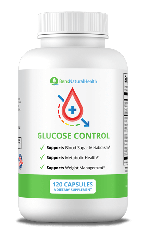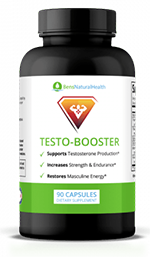- Q: What are Rapaflo and Flomax Used for?
- Q: What are the Benefits of Rapaflo vs Flomax?
- Q: What are the Main Differences between Silodosin (Rapaflo) and Tamsulosin (Flomax)?
- Q: How are Rapaflo and Flomax Similar?
- Q: Is Flomax better than Rapaflo?
- Q: What are the side effects and risks of Rapaflo vs. Flomax?
- Top Questions About Choosing Between Rapaflo and Flomax for BPH Treatment
- Conclusion
- Our Medical Review Process
- Our Editorial Guidelines
- Medical Disclaimer
- Source
If you’re dealing with benign prostatic hyperplasia (BPH), you might have come across two popular alpha-blockers, Rapaflo (Silodosin) and Flomax (Tamsulosin). While both are commonly prescribed for managing urinary symptoms caused by BPH, many patients wonder which one is better suited to their needs.
To provide clarity, we spoke with Dr. Parra, a renowned urologist specializing in prostate health, to discuss the uses, benefits, differences, and potential side effects of Rapaflo and Flomax. Dr. Parra’s insights are based on extensive research and clinical experience.
Throughout this interview, you’ll find comprehensive answers that shed light on Rapaflo vs Flomax. Dr. Parra also shared studies and resources to help you make informed decisions.
Q: What are Rapaflo and Flomax Used for?
Dr. Parra answers: Rapaflo (silodosin) and Flomax (tamsulosin) are both alpha-blockers primarily prescribed to improve urinary symptoms in men with benign prostatic hyperplasia (BPH). These medications work by relaxing the muscles around the prostate and urethra, allowing for better urine flow.
Interestingly, both drugs also have off-label uses, including:
- Treatment of ureteral kidney stones
- Managing urinary symptoms in women (though evidence is limited and they are not commonly recommended for this purpose)
While Rapaflo is sometimes considered more effective for off-label use in eliminating kidney stones, it is important to note that both medications are primarily approved for treating urinary symptoms related to BPH. Their use for female urinary symptoms is not well supported by clinical data and is not a first-line treatment according to the American Urological Association (AUA) guidelines.
Q: What are the Benefits of Rapaflo vs Flomax?
Dr. Parra answers: Flomax is one of the earliest and most widely used treatments for BPH, offering several benefits:
- Stronger and steadier urine stream
- Improved urinary flow without straining
- Decreased dribbling and underwear staining
- Reduced urinary frequency, especially at night
- Lessened sensation of incomplete bladder emptying
Rapaflo’s benefits are quite similar, but it has shown a slight edge in certain cases. The benefits include:
- Relief of urinary symptoms in men
- Improved urinary stream
- Reduced urinary frequency
- Decreased sensation of incomplete bladder emptying
Additionally, Rapaflo has been shown to be more effective at reducing postvoid residual volume (the amount of urine left in the bladder after urination). However, when it comes to overall symptom relief, both medications are similarly effective at improving quality of life for men with BPH. Individual responses may vary.
Clinical studies have not demonstrated significant differences in the overall improvement of BPH symptoms between silodosin and tamsulosin.
Get Your FREE PSA Lowering Diet Plan!
- Naturally lower PSA levels
- Reduce nighttime trips to the bathroom
- Enjoy better bladder control and urine flow
Q: What are the Main Differences between Silodosin (Rapaflo) and Tamsulosin (Flomax)?
Dr. Parra answers: The primary difference lies in where and how these medications act. Rapaflo specifically targets alpha-1a receptors, which are primarily found in urinary tissues. This makes it more selective and less likely to impact blood pressure.
On the other hand, Flomax acts on all alpha receptor subtypes, including those found in vascular tissues. As a result, one study found that Flomax can lower blood pressure, sometimes causing dizziness or fatigue.
Additionally, Rapaflo offers unique advantages, such as:
- More effective reduction in postvoid residual volume (the urine remaining in the bladder after urination)
- Superior results in clearing urethral stones
However, Flomax remains a trusted option for patients who may not need such targeted effects.
As research shows, Silodosin’s selectivity for alpha-1a receptors is 38 times higher than that of tamsulosin
Q: How are Rapaflo and Flomax Similar?
Dr. Parra answers: Both medications belong to the same family of alpha-blockers and share a similar mechanism of action. They block alpha-1 receptors in smooth muscle, which relaxes the muscle tissue and improves urinary and blood flow.
These receptors are activated by epinephrine and norepinephrine, which maintain muscle tone in a contracted state. By inhibiting these receptors, Rapaflo and Flomax reduce muscle tension in the prostate and bladder neck, easing urinary symptoms.
Q: Is Flomax better than Rapaflo?
Dr. Parra answers: Most studies show that Flomax and Rapaflo are similarly effective in improving urinary symptoms. However, Rapaflo appears slightly more effective in certain cases.
For instance, a 12-week study conducted at nine medical centers found significant improvement in urinary symptoms for 86% of patients taking Rapaflo and 82% of those taking Flomax. While the difference in symptom relief was minimal, Rapaflo demonstrated superior results in reducing postvoid residual volume.
According to another study, Rapaflo showed more significant residual urine volume improvements than Flomax for patients with brachytherapy-induced urinary symptoms. Although these differences may not always translate to noticeable symptom relief, they highlight Rapaflo’s targeted action on the urinary tract.
It’s important to note that while Rapaflo may be more effective at reducing postvoid residual volume, overall symptom alleviation for BPH is not significantly different between the two medications.

Q: What are the side effects and risks of Rapaflo vs. Flomax?
Dr. Parra answers: Since Rapaflo and Flomax belong to the same drug class, they share many common side effects, including:
- Dizziness, weakness, or fatigue (often due to hypotension)
- Headache or sinusitis
- Back pain
- Nasal congestion
- Abnormal ejaculation (e.g., reduced semen volume or difficulty ejaculating)
- Nausea, diarrhea, or abdominal pain
- Sleep disturbances, including insomnia
- Mild allergic reactions
Severe adverse reactions, while rare, require immediate medical attention. These include:
- Swelling of the face or tongue
- Painful, prolonged erections
- Palpitations or chest pain
- Fainting
One notable difference is the incidence of abnormal ejaculation. Rapaflo is associated with a higher rate of ejaculatory issues, including retrograde ejaculation, with up to 28% of users experiencing this side effect. This is significantly higher than Flomax, where the incidence is much lower (around 1%). While retrograde ejaculation is not harmful, it may be distressing for individuals with fertility concerns.
Rapaflo’s lack of significant impact on blood pressure makes it a better choice for patients at risk of hypotension. Ultimately, the choice between Rapaflo and Flomax depends on the patient’s medical history and risk factors for these side effects.
Top Questions About Choosing Between Rapaflo and Flomax for BPH Treatment
Q: Is Rapaflo more effective for managing frequent nighttime urination than Flomax?
Dr. Parra answers: Rapaflo and Flomax have similar modes of action and effectiveness in managing lower urinary tract symptoms. They both work as alpha-blockers that relax the muscles that surround the urinary bladder and urethra. Studies show that both medications can improve symptoms such as frequent nighttime urination. However, the data shows better results in postvoid volume after using Rapaflo. Thus, Rapaflo can be an excellent choice if you are taking Flomax and still experiencing a sensation of incomplete bladder emptying after voiding.
Rapaflo works by selectively blocking a subtype of the alpha receptor found primarily in the urinary tissues. This targeted action may lead to improvements in symptoms associated with prostate enlargement. Some patients report better management of nighttime urination with Rapaflo, possibly due to its effect on postvoid volume, which may allow the bladder to take longer to fill overnight. This could explain why Rapaflo helps some patients manage frequent nighttime urination better than Flomax.
However, it’s important to note that while Rapaflo can help reduce nocturia, patients should also consider avoiding excessive fluid intake before bedtime to further reduce the number of nighttime voids and improve sleep quality.
Additionally, as research indicates, Rapaflo has shown superior results in managing small to medium-sized ureteral stones (4-10mm), with a higher stone expulsion rate than Flomax (82% vs. 58%). This may be an added benefit for patients with urinary symptoms and a history of kidney stones.
Q: Which drug is safer for men with a history of blood pressure problems, Rapaflo or Flomax?
Dr. Parra answers: Many specialists consider Rapaflo to be a better option for patients with a history of blood pressure issues. Both Rapaflo and Flomax are alpha-blockers, but the key difference lies in the specific type of alpha receptors they target. Flomax doesn’t have a preference for which type of receptor it blocks, whereas Rapaflo is more selective for the alpha-1a receptors, which are mainly found in the urinary tract.
This selectivity gives Rapaflo an advantage when it comes to minimizing side effects related to blood pressure. Because it acts primarily on the urinary tract receptors, Rapaflo has a lower likelihood of affecting blood pressure or heart rhythm.
Flomax, on the other hand, activates a broader range of alpha receptors, including those in blood vessels. This can lead to postural hypotension (a drop in blood pressure when standing up), dizziness, drowsiness, and headaches. Additionally, while there isn’t substantial evidence linking Flomax to QT-interval prolongation or notable ECG changes, some studies suggest that it may have a slight impact on heart rhythm in certain patients, especially those with a history of cardiovascular issues. This makes Flomax less ideal for patients with existing blood pressure problems or other heart-related concerns.
Rapaflo’s higher selectivity for alpha-1a receptors means it is less likely to affect blood pressure or heart rhythm, making it a safer choice for men with blood pressure problems. However, any medication change should always be discussed with a healthcare professional to ensure it’s the right choice for your specific health needs.
Q: Is Rapaflo consistently better than Flomax for passing kidney stones, or does it depend on the situation?
Dr. Parra answers: Yes, according to studies, Rapaflo is consistently better than Flomax for passing kidney stones, particularly for small to medium-sized stones. One study compared the stone expulsion rates and time to stone expulsion between tamsulosin (Flomax) and silodosin (Rapaflo). In this study, patients using tamsulosin had a stone expulsion rate of 58%, while those using silodosin had a significantly higher rate of 82%. This difference was statistically significant, indicating that Rapaflo is more effective in promoting spontaneous stone expulsion.
However, it’s important to note that this study specifically included patients with uncomplicated middle or lower ureteral stones ranging from approximately 4.5 mm to 1 cm in size. Larger stones (greater than 1 cm) may not respond well to either medication, and different treatment approaches, such as lithotripsy or surgical intervention, may be needed for these larger stones.
Rapaflo’s higher selectivity for alpha-1a receptors, which are primarily found in the urinary tract, is a key factor in its higher success rate for passing stones. However, for larger stones, both medications are less effective, and alternative treatments may be necessary.
Q: Do men switching from Flomax to Rapaflo report better symptom control or fewer side effects?
Dr. Parra answers: Not every patient experiences side effects the same way, and it highly depends on their individual predisposition, tolerance, and specific conditions. Both medications are alpha-blockers used to relieve symptoms of BPH. However, Rapaflo is more selective to alpha-1 adrenergic receptors, while Flomax blocks all alpha receptors without a preference.
Patients switching from Flomax to Rapaflo may report improved symptom control while reducing cardiovascular side effects, such as hypotension, dizziness, and hypotension-related headaches. Because Rapaflo has fewer circulatory system-related issues, it is a preferable choice for men with blood pressure problems or those taking blood pressure medications. As mentioned by the authors in a study, “silodosin may be especially beneficial in patients who need to maximize cardiovascular tolerability”.
However, some patients may experience a different side effect profile with Rapaflo. While it reduces cardiovascular side effects, it may increase the likelihood of sexual side effects, particularly retrograde ejaculation. Studies suggest that 20-28% of men taking Rapaflo may experience retrograde ejaculation, compared to only 1-2% of men on Flomax. Erectile dysfunction is also more commonly associated with Rapaflo than Flomax. This may be due to Rapaflo’s stronger effect on the prostate and urethra, which can influence the contraction of seminal vesicles and pelvic floor muscles.
Therefore, men with blood pressure issues may benefit from switching to Rapaflo, while those concerned about sexual side effects may prefer Flomax. It’s important to discuss these options with your healthcare provider before making any changes to your medication regimen.
Q: Why is abnormal ejaculation more common with Rapaflo than Flomax, and can it be minimized?
Dr. Parra answers: Abnormal ejaculation is more common with Rapaflo than Flomax, particularly retrograde ejaculation. This is a harmless condition where semen enters the urinary bladder instead of exiting through the penis. This is because, as mentioned above, Rapaflo has a higher selectivity for alpha-1a receptors, which are mainly found in the smooth muscle of the prostate and bladder neck. The study mentioned above concludes that Rapaflo reduces the contraction of the pelvic floor muscles and the seminal vesicles, leading to retrograde ejaculation.
While retrograde ejaculation is harmless, it may be distressing for some men, particularly those concerned about fertility or sexual satisfaction. If this side effect is troublesome, there are several options for minimizing its impact. One approach is lowering the dose of Rapaflo, as this can reduce ejaculatory dysfunction while still maintaining symptom relief. Alternatively, switching to a less selective alpha-blocker, such as Alfuzosin, may also reduce sexual side effects.
In addition to medication adjustments, review studies suggest lifestyle changes can help manage urinary symptoms. Maintaining a healthy weight, engaging in regular physical activity, and avoiding bladder irritants like coffee and alcohol can support overall urinary health and reduce reliance on medication.
For men wishing to conceive, sperm retrieval through voiding or directly from the epididymis or testis is still possible, even with retrograde ejaculation. As always, these changes should be discussed with a healthcare provider to determine the best course of action.
Conclusion
Rapaflo and Flomax are both effective alpha-blockers for managing BPH symptoms. The key difference is that Rapaflo specifically targets alpha-1a receptors in urinary tissues, while Flomax acts on all alpha-1 receptor subtypes, including those in vascular tissues.
While Rapaflo offers advantages such as better postvoid residual volume reduction and less impact on blood pressure, Flomax remains a reliable option with a slightly lower incidence of ejaculation-related side effects.
The decision of Rapaflo vs Flomax ultimately depends on individual patient needs, side effect profiles, and the treating physician’s recommendations.
| Feature | Flomax | Rapaflo |
| Mode of action | Inhibits all subtypes of alpha-1 receptors | Selectively inhibits alpha-1 receptors subtype A |
| BPH symptomatic improvements | Improvements in urinary symptoms | No significant difference in symptom improvements |
| Post-void residual volume | Reduced residual volume and sensation of incomplete bladder emptying | More profound reduction of post-void residual volume. No noticeable difference in symptoms compared to Flomax. |
| Effects on urinary stones | Mild improvements in calculi elimination | Off-label use. Significant improvement in calculi elimination |
| Adverse events | Increased incidence of hypotension compared to Rapaflo | Increased incidence of ejaculatory problems compared to Flomax |
Our Medical Review Process
At Ben’s Natural Health, we prioritize transparency, accuracy, and scientific excellence. Medical professionals carefully craft every piece of content and undergoes comprehensive reviews every 12 to 24 months. This rigorous process ensures that our information remains current, precise, and rooted in reliable research. We exclusively reference peer-reviewed studies from esteemed medical journals, providing full citations and direct links for your confidence. Please visit our medical review process to learn more about our detailed review process and research standards.
Our Editorial Guidelines
For over 25 years, Ben’s Natural Health has been a trusted authority on natural health, delivering scientifically accurate, high-quality content. Our editorial standards are designed to uphold the integrity and reliability of every article. Each piece is written by qualified professionals, including doctors, dietitians, nutritionists, fitness experts, and surgeons, and subjected to independent quality checks. We maintain transparency by prominently displaying the credentials and biographies of our contributors at the start of every article. Please refer to our editorial guidelines for further details on how we create and fact-check our content.
Medical Disclaimer
The content on this blog is intended for informational purposes only and should not be considered a substitute for professional medical advice, diagnosis, or treatment. While all content is reviewed and authored by licensed medical professionals, it may not address your specific health needs. Always consult with your primary care physician or a qualified healthcare provider before making health-related decisions. Never disregard professional medical advice or delay seeking it based on the information provided here. Your use of this blog and its content is at your own risk.








